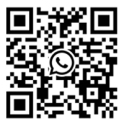|
Determine whether the bearing can be used againTime:2024-03-15 Regularly check the equipment, check the operation, and remove the bearings when the peripheral parts are replaced to determine whether it can be used again or the condition is better or worse. The bearing and appearance of the dismantled bearing should be carefully investigated and recorded. In order to clarify and investigate the remaining amount of lubricant, the bearing should be cleaned well after sampling. "Secondly, check the condition of the raceway surface, rolling surface and mating surface, and the wear status of the cage for damage and abnormal conditions. To determine whether the bearing can be used again, we must consider the degree of bearing damage, machine performance, importance, and operating conditions. And the inspection cycle will be decided later. In the inspection results, if the bearing is found to be damaged or abnormal, the content of the injury section will determine the cause and develop countermeasures. In addition, if the inspection results have the following defects, the bearing can no longer be Used, need to replace with new bearings. 1. Any of the inner and outer rings, rolling elements, and cages have cracks and debris. 2. Any of the inner and outer rings and rolling elements are peeled off. 3. The raceway surface, ribs, and rolling elements are significantly damaged. 4. The cage is severely worn or the rivets are loose. 5. The raceway surface and rolling elements are rusty and scratched. 6. There are significant indentations and scratches on the rolling surface and rolling elements. 7. There is creep on the inner diameter surface of the inner ring or the outer diameter of the outer ring. 8. Overheating and discoloration. 9. The seal ring and dust cover of the grease sealed bearing are severely damaged. Inspection and troubleshooting during operation; The inspection items during operation include the rolling noise, vibration, temperature, and lubrication status of the bearing. The specific conditions are as follows: First, the rolling sound of the bearing; Using a sound detector to check the magnitude and sound quality of the rolling sound of the bearing during operation, even if the bearing is slightly damaged such as peeling, abnormal sounds and irregular sounds will be emitted, which can be distinguished by the sound detector. Second, the vibration of the bearing; Bearing vibration is very sensitive to bearing damage. For example, peeling, indentation, rust, crack, and wear will be reflected in bearing vibration measurement. Therefore, the size of vibration can be measured by using a special bearing vibration measuring device. The specific circumstances of the anomaly cannot be inferred. The measured values vary depending on the conditions of use of the bearing or the mounting position of the sensor. Therefore, it is necessary to analyze and compare the measured values of each machine in advance to determine the judgment standard. Third, the temperature of the bearing; The temperature of the bearing can generally be estimated by the temperature outside the bearing. If the temperature of the outer ring of the bearing can be directly measured using the oil hole, it is more appropriate. Generally, the temperature of the bearing gradually rises as the operation starts, and reaches a steady state after 1-2 hours. The normal temperature of the bearing varies with the machine's heat capacity, heat dissipation, speed and load. If the lubrication and installation parts are suitable, the bearing temperature will rise sharply and abnormally high temperatures will occur. At this time, the operation must be stopped and necessary precautions must be taken. The use of a thermal sensor can monitor the working temperature of the bearing at any time, and can automatically alert the user when the temperature exceeds the specified value or stop preventing a shaft accident. |







